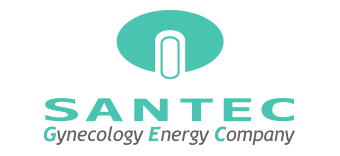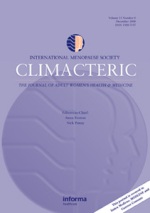second generation vaginal erbium Laser
Vaginal Erbium Laser: the Second Generation Thermotherapy for the Genitourinary Syndrome of Menopause (GSM) in Breast Cancer Survivors. A preliminary report of a pilot study Marco Gambacciani 1, Marco Levancini 1, 2 1Department of Obstetrics and Gynecology, Pisa University Hospital, 2 Department of Obstetrics and Gynecology, Clinica Alemana, Universidad Del Desarrollo, Santiago. Chile ABSTRACT
This is a preliminary report of a pilot study aimed to assess the effectiveness and safety of vaginal erbium laser in the treatment of Genitourinary Syndrome of Menopause (GSM) in postmenopausal breast cancer survivors. GSM symptoms were assessed before and after three applications of erbium laser in 13 women, using subjective (visual analog scale) and objective (Vaginal Health Index Score, VHIS) measures. : Vaginal Erbium laser treatment was effective to improve GSM symptoms. Both subjective and objective scores significantly improved in comparison with baseline values ( p <0.01). No adverse events were recorded during the study period. This preliminary results suggest that Vaginal Erbium Laser is effective and safe for the treatment of GSM in postmenopausal Breast Cancer Survivors. Keywords: Menopause, Estrogen, Erbium Laser, Genitourinary Syndrome of Menopause, Breast Cancer Survivors SOMMARIO Il lavoro riporta una analisi preliminare di uno studio pilota condotto per valutare efficacia e sicurezza del trattamento con laser Erbium vaginale della sindrome genitourinaria della menopausa (Genitourinary Syndrome of Menopause , GSM) in donne in postmenopausa dopo trattamento per una carcinoma della mammella. I sintomi sono stati valutati in 13 donne, usando scale per la valutazione soggettiva (VAS, visual analog scale) e oggettiva (Vaginal Health Index Score, VHIS). Il trattamento con laser Erbium vaginale è risultato capace di ridurre la sintomatologia della GSM. Sia gli score soggettivi che quelli oggettivi hanno mostrato un significativo miglioramento rispetto ai valori basali ( p <0.01). Non sono stati riscontrati eventi avversi durante lo studio. In conclusione, questi risultati preliminari suggeriscono che il con laser erbium possa rappresentare una alternative efficace e sicura per il trattamento della GSM in donne in postmenopausa dopo Carcinoma della Mammella. Parole chiave: INTRODUCTION The genitourinary syndrome of menopause (GSM) may affect up to 50% of postmenopausal women, their symptoms tend to be progressive, jeopardizing quality of life and sexual relationships(1-3). Local hormone replacement therapy (HRT) is the treatment of choice(2-5). However, many women have contraindications, such as a history of estrogen-dependent tumors, particularly endometrial cancer and breast cancer(2-5). No single agent can globally ameliorate the quality of life of breast cancer survivors, coping with menopausal symptoms. Particularly, specific studies on GSM treatment in breast cancer survivors are scarce. Laser technology is currently widely used with positive effects demonstrated on basic and clinical studies on tissue remodeling, collagenogenesis and angiogenesis(6-8). The different types of lasers have different physical characteristics that determine specific effects on tissues. Recently in a pilot study, Salvatore et al.(9) demonstrated that treatment with fractionated CO2 laser induced a significant improvement of the GSM in postmenopausal women. The aim of this study is to evaluate the short-term efficacy and acceptability of a second generation of vaginal laser treatment, using an erbium laser crystal yttrium-aluminum-garnet (Er: YAG) as a non-ablative photothermal therapy for the management of GSM in breast cancer survivors. MATERIAL AND METHODS This is a pilot study, conducted in women attending menopause clinic of Pisa University Hospital with an history of treated breast cancer and suffering from GSM. All patients gave written informed consent. The protocol was revised by an National Independent Advisory Board and approved by the Ethics Committee of the Department of Obstetrics and Gynecology. The Correspondence to: margamba@tin.it Copyright 2014, Partner-Graf srl, Prato It. J. Gynaecol. Obstet. 2015, 27: N.1 10 Mean DS Min-Max Age 55.7 7.7 38-68 Age at menopause 47.8 6 31-53 Years since menopause 8.0 5.2 3-15 Table I. Baseline characteristics of the breast cancer survivors (n=13) included in the study. procedures followed were in accordance with the ethical standards of the Committee on Institutional human experimentation, and with the Helsinky Declaration of 1975, as revised in 1983. Inclusion criteria were the presence of GSM in women with plasma levels of gonadotropin and estradiol in postmenopausal range (FSH> 40 U/L; estradiol <25 pg/ml) and negative PAP smear. Exclusion criteria were: lesions, scars or infection active or recents (30 days) of the genitourinary tract; abnormal uterine bleeding; use of lubricants or any other local preparation within 30 days prior inclusion to study; history of photosensitivity disorder or use of photosensitizing drugs; genital prolapse (grade II-III classification POP-Q); serious or chronic illness that could interfere with the fulfillment of the study; and have been treated with hormones or other medications to relieve menopausal symptoms in the previous 3 months. In this preliminary report, we show the results of patients suffering from severe GSM after a successful treatment for breast cancer. All patients women were treated with Erbium laser (XS Fotona Smooth™, Fotona, Ljubljana, Slovenia) with a wavelength of 2940 nm. The diameter of the laser spot size was 7 mm, with a pulse according to the SMOOTH™ mode at a frequency of 1.6 Hz, and fluence (laser energy emitted per unit area) of 6.0 J/cm2. The procedures were performed on an outpatient basis without anesthesia or drug use before or after the intervention. The treatment protocol consists of 3 laser applications every 30 days (L1, L2, L3) with a visit 2-4 weeks before treatment (V0) and a follow-up visit 4 and 12 weeks after the last application. Laser parameters (phase I Renovalase™ mode) were established with a fluence of 5.5 J/cm2 with the SMOOTH mode at a frequency of 1.6 Hz; the spot size was 7 mm. After inserting the vaginal speculum specifically designed, the probe (R11) is inserted into the speculum, without direct contact with the vaginal mucosa. Subsequently circular irradiation of vaginal wall is performed, with 4 pulses given every 5 mm and the probe is retracted by 5 mm at a time (using the graduate scale on the probe) to reach the entrance of the vaginal canal. This procedure is repeated 3 times by rotating the speculum 45° each time to achieve full surface irradiation. Finally, after removing the speculum and change the probe (PS03), the vestibule and the introitus are irradiated with the setting (Renovalase ™ Phase 2) with a spot size of 7 mm, a fluence of 10 J/cm2, SMOOTH™ mode frequency 1.6 Hz. After treatment, patients are recommended to have sexual abstinence for one week. Subjective symptoms (vaginal dryness and dyspareunia) were assessed using a visual analogue scale (VAS) at each visit (range 0-10, 0 = total absence of symptom and 10 cm = worst symptom) and the Vaginal Health Index Score (VHIS) was calculated. VHIS evaluates the aspect of the vaginal mucosa (elasticity, pH, vaginal discharge, mucosal integrity and moisture). These parameter were evaluated at baseline (T0), after the first (L1), second (L2) and third (T3) laser treatments, as well as after 4 (T+4) and 12 (T+12) weeks after the last laser treatment. Each parameter is graded from 1 to 5 being atrophic a total score ≤ 15(10). In the post-treatment control, acceptability of therapy was asked, describing it as: excellent, good, fair, bad or unacceptable. Patients who leave the study before the deadline were considered dropouts. This is an interim report, of an ongoing study the sample size was not based on a statistical rationale. Data are presented as mean and standard deviation. Continuous variables were analyzed using the ANOVA for repeated measures and the Wilcoxon sign-rank test. Data were analyzed using StatView version 2.5 software (SAS Science, Chicago, IL, USA). RESULTS Table I show demographic characteristics of patients included in the study. Vaginal dryness and dyspareunia scores showed a progressive decrease after 1st, 2nd and 3rd treatment (p<0.01, Figure 1).. The results were maintained during the follow up, after 4 and 12 weeks from the last laser treatment (p<0.01, Figure 1). Conversely, VHIS values showed a significant increase during the treatment, and the results were maintained after 4 and 12 weeks from the last laser treatment (p<0.01, Figure 2). No adverse events related to the procedure were recorded throughout the study period. No patients dropped out from the study. 11 M. Gambacciani et al. REFERENCES 1) Portman D. J. and Gass M. L. S. on behalf of the Vulvovaginal Atrophy Conference Panel. Genitourinary syndrome of menopause: new terminology for vulvovaginal atrophy from the International Society for the Study of Women ’ s Sexual Health and The North American Menopause Society. Climateric 2014; 17 (5):557-63. 2) Sturdee D W, Panay N. Recommendations for the management of postmenopausal vaginal atrophy. Climacteric 2010; 13 (6): 509 – 22 3)Management of symptomatic vulvovaginal atrophy: 2013 position statement of The North American Menopause Society. Menopause 2013; 20: 888 – 902 4)Santen RJ, Allred DC, Ardoin SP, et al. Executive summary: Postmenopausal hormone therapy: an Endocrine Society scientific statement. J Clin Endocrinol Metab 2010 ; 95 (Suppl 1) : s1 – 66 5) De Villiers T. J., A. Pines , N. Panay , M. Gambacciani, D. F. Archer , R. J. Baber , et al., on behalf of the International Menopause Society. Updated 2013 International Menopause Society recommendations on menopausal hormone therapy and preventive strategies for midlife health. Climateric 2013; 16: 316–337. 6) Kaufmann R, Hibst R. Pulsed Erbium:YAG laser ablation in cutaneous surgery. Lasers Surg Med. 1996;19(3):324-30 7) Levy JL, Trelles MA. New operative technique for treatment of xanthelasma palpebrarum: laser inverted resurfacing: preliminary report. Ann Plast Surg. 2003 Apr; 50(4):339-43 8) Vizitin Z., Novel Minimally Invasive VSPEr:YAG Laser Treatments in Gynecology , J. LAHA, Vol. 2012, No.1; pp.46-58. 9) Salvatore S, Nappi R E, Zerbinati N, Calligaro A, Ferrero S , Origoni M , et al. A 12-week treatment with fractional CO 2 laser for vulvovaginal atrophy: a pilot study. Climacteric 2014;17:1–7 10)Bachmann GA, Notelovitz M , Kelly SJ, et al. Longterm nonhormonal treatment of vaginal dryness. Clin Pract Sexuality 1992 ; 8 : 3 – 8 11) Gaspar A. Comparison of New Minimally Invasive Er:YAG Laser Treatment and Hormonal Replacement Therapy in the treatment of Vaginal Climacteric 2014;17(Suppl 1):48–108, P 124. Figure 1. Effect of second generation laser thermotherapy on Dryness and Dyspareunia scales (10-point scale, cm) in 13 postmenopausal breast cancer survivors (* p< 0.01 vs basal values) . See text for details. Figure 2. Effect of second generation laser thermotherapy on Vaginal Health Index Score (VHIS) in 13 postmenopausal breast cancer survivors (* p< 0.01 vs basal values). See text for details. DISCUSSION The analysis of this preliminary study indicates that the second generation vaginal thermotherapy using Erbium laser is effective and safe for the treatment of GSM in postmenopausal breast cancer survivors. The results obtained in this small series of patients indicate that this method is practical, seems to be well accepted and not related to adverse events. In these particular set of patients the vaginal erbium laser improved the most bothersome symptoms , just after the first application of laser. Similar results were previously reported in normal postmenopausal women using either the Erbium laser (11), and the CO2 laser (9). These preliminary, short term results show that treatment with vaginal Erbium laser in breast cancer survivors suffering from severe GSM is feasible, effective and safe in the short term. Further studies are needed to evaluate the effectiveness and the safety of vaginal erbium laser treatment. If these results will be confirmed in properly sized and long-term studies, we will have a safe and effective option to treat GSM in women presenting contraindication to postmenopausal hormone use. AKNOWDLEGMENTS The AA express their thanks to the Members of National Independent Advisory Board, Prof Nicoletta Biglia, Torino; Prof. Rossella Nappi, Pavia; Prof. Anna Maria Paoletti, Cagliari, for their excellent work in revising the protocol.


